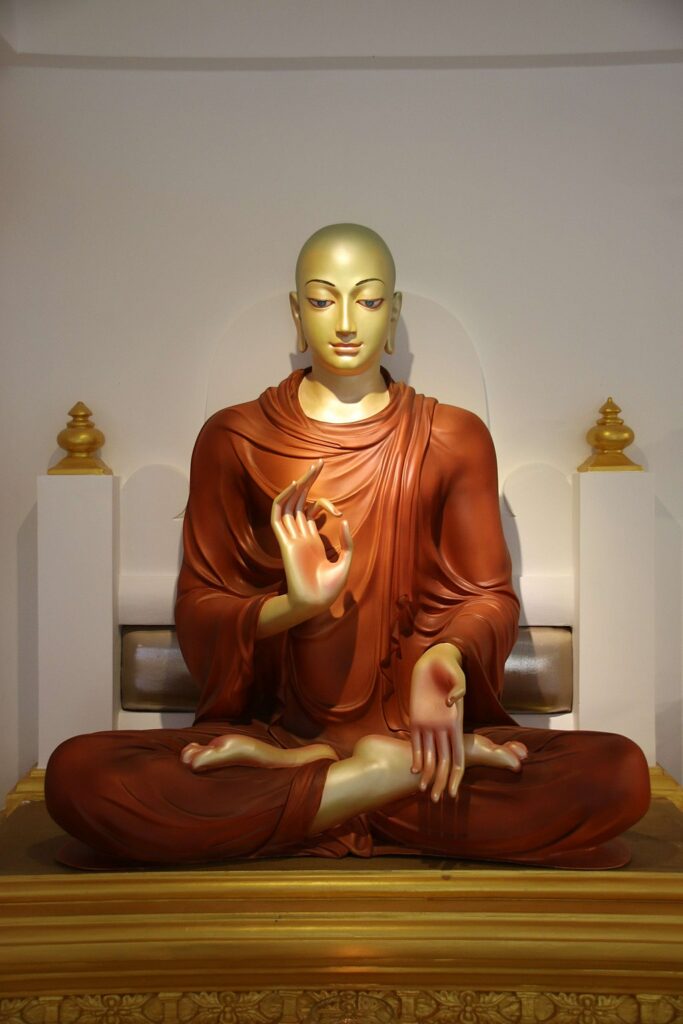
The first teaching of the Buddha is called “The Four Noble Truths”. These were his insights about human existence. Inside these four sentences are all the dharma. Or as my teacher, Lama Michael used to day, “Inside any of the dharma is all of the dharma.”
The First Noble Truth is the truth suffering; the fact of suffering. Grim, isn’t it? But even understanding this teaching is to take a step away from suffering, towards liberation or freedom. Abou this truth, the Buddha said, “This suffering, as a noble truth, should be fully understood.”
The Pali word ‘dukkha‘ is usually translated as suffering, stress, pain, unhappiness or dissatisfaction.
What is dukkha? The Buddha taught (in the winding speech pattern of the time)
Now this, monks, is the Noble Truth of dukkha: Birth is dukkha, aging is dukkha, death is dukkha; sorrow, lamentation, pain, grief, & despair are dukkha; association with the unbeloved is dukkha; separation from the loved is dukkha; not getting what is wanted is dukkha. In short, the five clinging-aggregates are dukkha.
SN 56.11 (this is a link to a sutra, a translation of a direct teaching of the Buddha)
Buddhism categorizes Three Kinds of Suffering:
- The is suffering of suffering: the outright pain of, say, stubbing your toe. I love it that the Pali word for this is dukkha-dukkha. Suffering-suffering.
- The suffering of change: that experience when you think things are just right and you want them to stay how they are right now (which is impossible since they are impermanent) and they change—which they inevitably will.
- And the suffering of cyclic existence—which I like to think of as the pervasive suffering of conditioning. This is a dense topic, but think of it for now as this: All our life is spent trying to finally fix samsara. We are constantly hoping for something that can’t actually happen, which is for the world as we know it to be fixed once and for all. “If I just (fill in the blank) then I will be happy once and for all.” Thinking like this, we run off to exert our effort to change things in life for the better. But the effort will never end and we forget that part. Money can’t fix it all. Intellect can’t fix it all. A good heart can’t fix it all. This is samsara—when it’s broken, it’s working! That’s it’s nature.
Since these three sufferings are the natural experience of being human, we are happier when we acknowledge this truth and live our lives accordingly. When you get a new cup, remember that one day it will break.
This is deeper than it might seem. To expound on suffering is not to say there is not joy, or even bliss in life. There most certainly is…new found love, cherry blossoms in spring, puppies and beauty are all joyful experiences. It’s more to say that to the extent that we recognize the character of life’s experiences as suffering, and to know that that suffering is transitory and illusory, our craving, confusion and disturbing emotions will subside naturally. There is relief in living inside truth.
In addition to those three categories of suffering, there are The Eight Sufferings of Being Human
- The suffering of being born
- The suffering of old age
- The suffering of sickness and
- The suffering of death.
- The suffering of worry about future harsh circumstances
- The suffering of being separated from the beings and the things that you love
- The suffering of not accomplishing what you most wish to accomplish
- The suffering of meeting situations you wish you could avoid.
The first four are conditions that every single human being will suffer, to one degree of another. No exceptions will be made. In addition to those four, each human life will be marked by four more sufferings, to a greater or lesser degree, which are enumerated in 5-8 in the list.
The Buddha and his disciples, especially including Shariputra, one of his main disciples, expanded greatly on these basic ideas about suffering.
If this feels depressing, remember that the next three Noble Truths tell what causes suffering and let’s us know that we can be free from suffering and even give us a map to freedom from suffering. These Four Noble Truths are a treatise a physician might make: The disease identified, the cause explained, the fact that it is curable and the cure.
Good news, right? Keep reading. The next post is about the Second Noble Truth.
